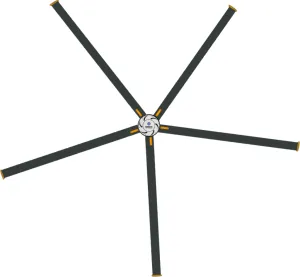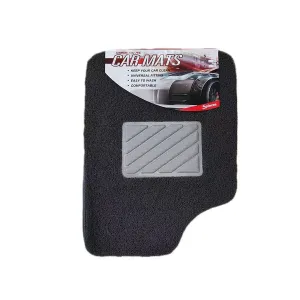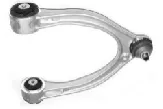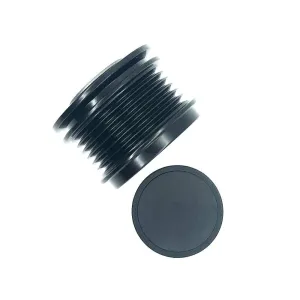Gear oil mainly refers to the lubricating oil of the transmission and rear axle . It is different from engine oil in terms of usage conditions, composition and performance. Gear oil mainly lubricates gears and bearings, prevents wear and rust, and helps gears dissipate heat.
Automotive gear oil is used in gear transmission mechanisms such as automobile steering gears, transmissions, and drive axles. Due to the high surface pressure during gear transmission, gear oil plays a role in lubrication, anti-wear, cooling, heat dissipation, anti-corrosion, anti -rust , cleaning and reduction of gears. Surface impact and noise play an important role.

introduce #
Gear oil should have good anti-wear, load-bearing properties and appropriate viscosity . In addition, it should also have good thermal oxidation stability , foam resistance , water separation performance and rust prevention performance . Since the gear load is generally above 490 MPa (MPa), and the hyperbolic tooth surface load is as high as 2942MPa, the amount of gear oil accounts for about 6% to 8% of the total lubricating oil. Gear oil is an excellent lubricant.
Gear oil is an important lubricating oil prepared from petroleum lubricating oil base oil or synthetic lubricating oil , with extreme pressure anti-wear agent and oiliness agent added. Used in various gear transmission devices to prevent tooth surface wear, scratches, sintering , etc., extend their service life, and improve power transmission efficiency. The hyperbolic tooth surface load is as high as 2942MPa. In order to prevent tooth surface wear and scratches caused by oil film rupture, extreme pressure anti-wear agents are often added to gear oil, and sulfur-phosphorus or sulfur-phosphorus-nitrogen type additives are commonly used.
working conditions #
The contact area between gears is very small, basically line contact, and there is both rolling friction and sliding friction during movement . In this way, the working conditions of gear oil are very different from other lubricants. Since the contact area between the gears is small, the pressure they bear is very high. The tooth surface pressure of the reducer gears of some load-bearing machinery reaches 400-1000 MPa. The use conditions of hyperbola gears in automobile transmission devices are more stringent and the loads are heavier. The pressure at the contact parts can be as high as 1000-4000 MPa. Under such high pressure, lubricating oil can easily be squeezed out from between the teeth, easily causing scratches and wear on the tooth surfaces. To this end, the gear oil must have the performance to keep the tooth surface in a state of boundary lubrication and elastohydrodynamic lubrication under high loads.
Appropriate viscosity is the main quality indicator of gear oil. High viscosity has a large load-bearing capacity, but excessive viscosity will also cause difficulties in circulating lubrication, increase the movement resistance of the gear, and cause heat generation and power loss. Therefore, the viscosity must be appropriate, especially oil with extreme pressure and anti-wear agents. Its load resistance mainly depends on the extreme pressure and anti-wear agents. The viscosity of this type of oil cannot be too high. It must have good thermal oxidative stability, good anti-wear and load resistance, good anti-foam performance, good anti-emulsification performance, good anti-rust and anti-corrosion properties, and good anti-shear stability .
In addition, there are other performance requirements, such as good low-temperature fluidity, adaptability to sealing materials, storage stability, open gear oil also requires adhesion, etc.
effect
#
(1) Lubricate the transmission system , reduce wear of gears and other moving parts , ensure normal movement of the transmission system, and extend service life.
(2) Reduce the friction and transmission loss of the gear transmission and improve mechanical efficiency .
(3) Cooling transmission parts. In gear transmission, a large amount of heat will be generated due to tooth surface contact and friction. If it is not dissipated in time, it will cause high temperature on the tooth surface, and in severe cases, it will cause ablation and adhesion. Gear oil continuously takes away heat during the circulating lubrication process and dissipates it through the air and transmission mechanism housing to ensure the normal operation of transmission parts.
(4) Prevent corrosion and rust.
(5) Reduce tooth surface impact and transmission noise.
(6) Gear oil has a cleaning effect and can continuously wash away pollutants and solid particles stuck on the surface of the gear.
development trend
#
Vehicle gear oil development trends
#
In recent years, there are the following three outstanding trends in the development of vehicle gear oil.
(1) Improve thermal oxidation stability: reduce sludge and paint film, extend the service life of oil products and achieve a lifetime of no oil changes. For example, DANA has launched SHAES-256 and SHAES-234 standards that require no oil changes for 500,000 miles and 750,000 miles. Shell has similar products, and PetroChina has launched a similar GL-5 long-life overweight transaxle gear oil.
(2) Develop special manual transmission oil: it has good friction characteristics and meets driving comfort. For example, API has formulated MT-1; Volkswagen, Citroën, etc. have formulated their own (VW501.50), (B712315), etc. OEM specifications; PetroChina has developed MTF10 and MTF18 manual transmission oil series that exceed the above specifications.
(3) More use of multi-grade oil: In order to meet the requirements of low-temperature shifting, high-temperature mucosal protection and fuel economy, multi-grade oil containing viscosity index improvers with good shear stability are used , such as 75W, 75W/90 , 75W/80, 75W/85 viscosity grade oil usage and proportion increased significantly.
The industry concentration of industrial gears in China is much higher than that of vehicle gears. Among the lubrication of industrial gears, there are lubrication of open gears, worm gears and closed gearboxes, of which closed gearbox lubrication is the main one. In recent years, many large-scale complete sets of projects have been introduced, and industrial gear devices are developing in the direction of miniaturization, high-speed, and standardization. With the improvement of gear design accuracy and the introduction of streamlined design, the load of gears is getting larger and larger, the tolerance between gears is getting smaller and smaller, and the gear tangential speed is accelerated. As the operating temperature increases, the traditional CKC and CKD series can no longer meet the requirements, and lubricating materials face real challenges. Industrial gear oil has transformed from a general lubricating material into an important component of gear design. On the one hand, industrial gearboxes are developing towards greater power, greater load and smaller volume, and are often exposed to moisture, high temperature, and dust. The working environment in which the load increases increases the tooth surface contact pressure and metal-to-metal wear and pitting corrosion. The reduction in gearbox volume leads to an increase in oil temperature; on the other hand, gear oil plays an important role in lubricating gears. At the same time, it is often necessary to ensure bearing lubrication, and humid working conditions can easily lead to increased bearing corrosion.
The new generation of gear oil requires better oxidation stability and thermal stability; a wider operating temperature range and extended oil change intervals; better extreme pressure and anti-wear properties; and better friction reduction and energy saving properties. Low speed and heavy load and high speed and heavy load are two more demanding transmission methods for industrial gears, such as cement mill transmission equipment (vertical roller mill reducer) and wind power gear speed increase box. These changes are mainly reflected in the German DIN51517-3 standard and OEM specifications such as Flender, FAG, and SKF. Compared with USS224, they have put forward requirements in terms of anti-micropitting, anti-wear and anti-corrosion performance; Mobil launched SHC XMP600 new synthetic industrial gear oil series products that simultaneously meet USS224 specifications, DIN51517-3 and Flender specifications, and passed FAC FE8 The test and FVA54 micropitting test help control micropitting and other forms of gear wear, and achieve 15 times protection against gear wear; CNPC’s corresponding FDIOOO, 2000, 3000 and KG series of high-end work tooth products have been launched in It has been applied in wind power, steel and other industries. Among them, the FD series focuses on solving the problem of pitting corrosion resistance, while the KG series strengthens the requirements of anti-oxidation, anti-corrosion, anti-emulsification and anti-foaming on the basis of CKD. [3]
Development trends of lubricating materials
#
As the form and structure of gears mature, their changes in industrial practice are mainly size, load and environment. In addition to the development of lubrication devices and designs, there are also several outstanding trends in lubrication materials worth noting:
(1) The overall technical requirements are to better take into account requirements such as corrosion and oxidation, and to extend the oil change period and the life of the gear device without reducing the extreme pressure performance.
(2) In terms of product development, there is a balance between general use and special use. For example, in terms of automotive lubricants, the 2105E specification emphasizes general use and simplified varieties for independent sites such as the military and field construction; while for civilian and group consumption, it is necessary to convert the drive axle to The oil used is separated from the transmission oil to maximize respective lubrication.
(3) From the market perspective, the demand for gear oil also has two sides. On the one hand, the technical content of the specifications is constantly improving, and the working conditions are becoming more and more demanding. Special gear oil with lubrication durability, economy and high reliability is needed, and high-quality gear oil is required. The combination of synthetic oil and special additives ensures good and smooth operation of the gear transmission, reduces economic losses caused by poor lubrication, reduces equipment maintenance costs, and prevents waste of resources; on the other hand, it is an oil product that meets basic performance and has superior cost. , will still dominate the traditional market, where the cost of base oils and additives must be very competitive, and additives need to be effective at low dosages.

 April 1, 2024
April 1, 2024 










